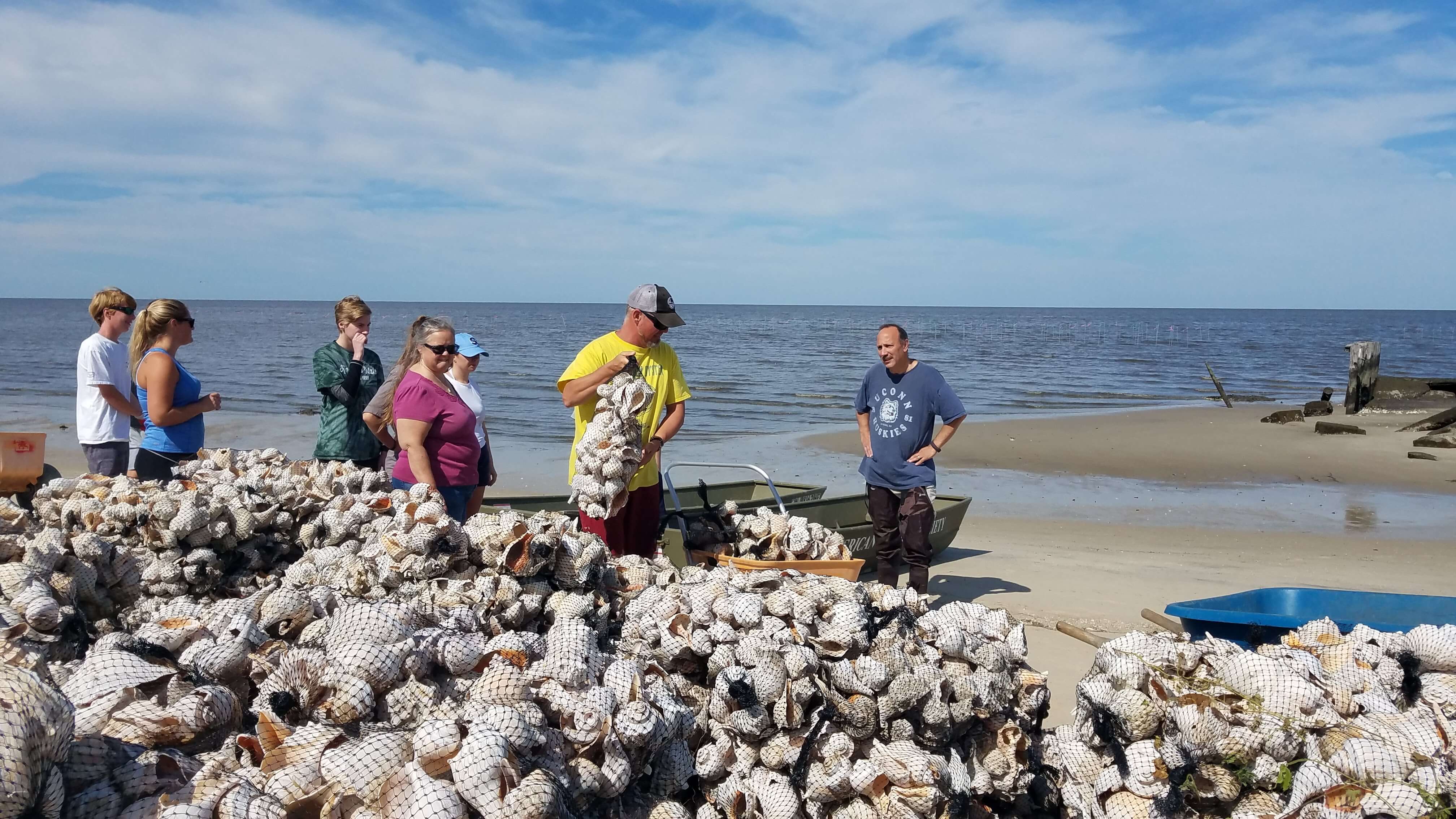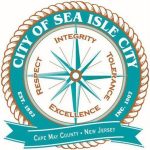COOK’S BEACH – “Are you ready to save the bay? Then let’s go.” With that, Capt. Alek Modjeski, habitat restoration program director for the American Littoral Society (ALS), led about 75 volunteers and staff of all ages in a reef-building effort Aug. 10.
The reef-building was designed to protect beaches along the Delaware Bay from storms, erosion and rising sea levels, while also providing fish and other marine creatures places to live.
Reef-building projects are part of the work ALS began following Hurricane Sandy. After restoring beaches at several Delaware bayshore locations, it began building near-shore reefs at many of those sites.
Oyster reef living shorelines have already been established at South Reed’s Beach, Moore’s Beach, Dyers Cove, and Thompson’s Beach.
The most recent project was the largest reef-building effort to date because the volunteers built three reefs, each about 200 feet long, double-wide, about 150 feet offshore. “It’s our most ambitious to date,” Modjeski said. “Each is a little larger than the size of half a football field.”
The reefs are made of 50-pound bags of recycled whelk shells, which are the state’s official shell, obtained from a local oyster farm. The multi-dimensional features of the shell make it ideal in preventing sand loss from wind-driven waves, creating a natural and protective living space for numerous aquatic creatures such as oysters, and making calmer waters for spawning horseshoe crabs headed for the beach.
The bags are piled in segments into a three-foot pyramid shape, then tethered to rebar so they don’t float away. There is a five-foot gap between segments to allow the horseshoe crabs to move easily to shore to lay eggs.
One of the first of the volunteers to arrive for the reef-building project, dubbed a “shell-a-bration,” were Isabel and Skylar Dasti, of Barnegat. Isabel is an assistant leader of a 4-H Eco Club her daughter and friends have formed. This was their first event. About six members participated in the project.
“It’s important to learn about the environment and keep it clean,” noted Skylar, 14, explaining why she was there. “This is the only planet we have.”
Echoing her thoughts was Bill Anderson, a veteran from Audubon. “I’m here to save what we have, to bring back our beaches and the fish,” he said. “I’ve fished in this bay since the 1950s and the fish just aren’t there like they used to be. This is the fifth reef I’ve helped build, so it’s important that we protect what we have.”
The volunteers and staff formed human chains to carry the bags of shells from the beach to waterline, placing them in boats and wheelbarrows to get them to staked-out areas. Many of the volunteers and staff also sloshed through the water and muck, carrying the bags out for placement. By the end of the four-hour event, Modjeski said almost all the reefs were complete.
“We did great,” he said. “The first reef is about 90% completed, the second is about 75% complete and the third is about half done. We have 23 pallets left and moved 51 pallets of shells in just three hours, that’s over 2,500 bags of shells.”
Modjeski said ALS staff and veterans would probably finish the reefs. Part of the funding for the project provided jobs for a small number of veterans.
The Shell-a-bration will be followed in November with a Veterans Day-on-the-bay celebration when one of the previously established reefs is dedicated to military veterans.
Modjeski said the other reefs have been successful in stopping beach erosion and increasing the availability of horseshoe crab eggs, critical for migratory shorebirds such as Red Knots.
“This past season we saw 31,000 Red Knots in the bay area, and 29,000 of them were within the four beaches where we have done reef work,” noted Dr. Larry Niles, wildlife biologist and conservationist who is co-leader of the project.
He noted the region had the densest population of horseshoe crabs, making the eggs available to both fish and birds.
“You can see how important this beach is,” he added.
Red Knots and other shorebirds help bring $35 million in tourist dollars to New Jersey’s Delaware bayshore region each year, according to the ALS.
The U.S. Fish and Wildlife Service (USFWS) has funded all of the Hurricane Sandy Coastal Resilience projects following the superstorm. The National Fish and Wildlife Foundation (NFWF) oversees the grants, dispenses funding and ensures project goals are met by grantees like the ALS.
Core partners on this project are Stockton University, Niles Smith Conservation LLC and the USFWS.
About $100 million was spent on restoration and resiliency projects in New York and New Jersey after Superstorm Sandy.
To contact Karen Knight, email kknight@cmcherald.com.








